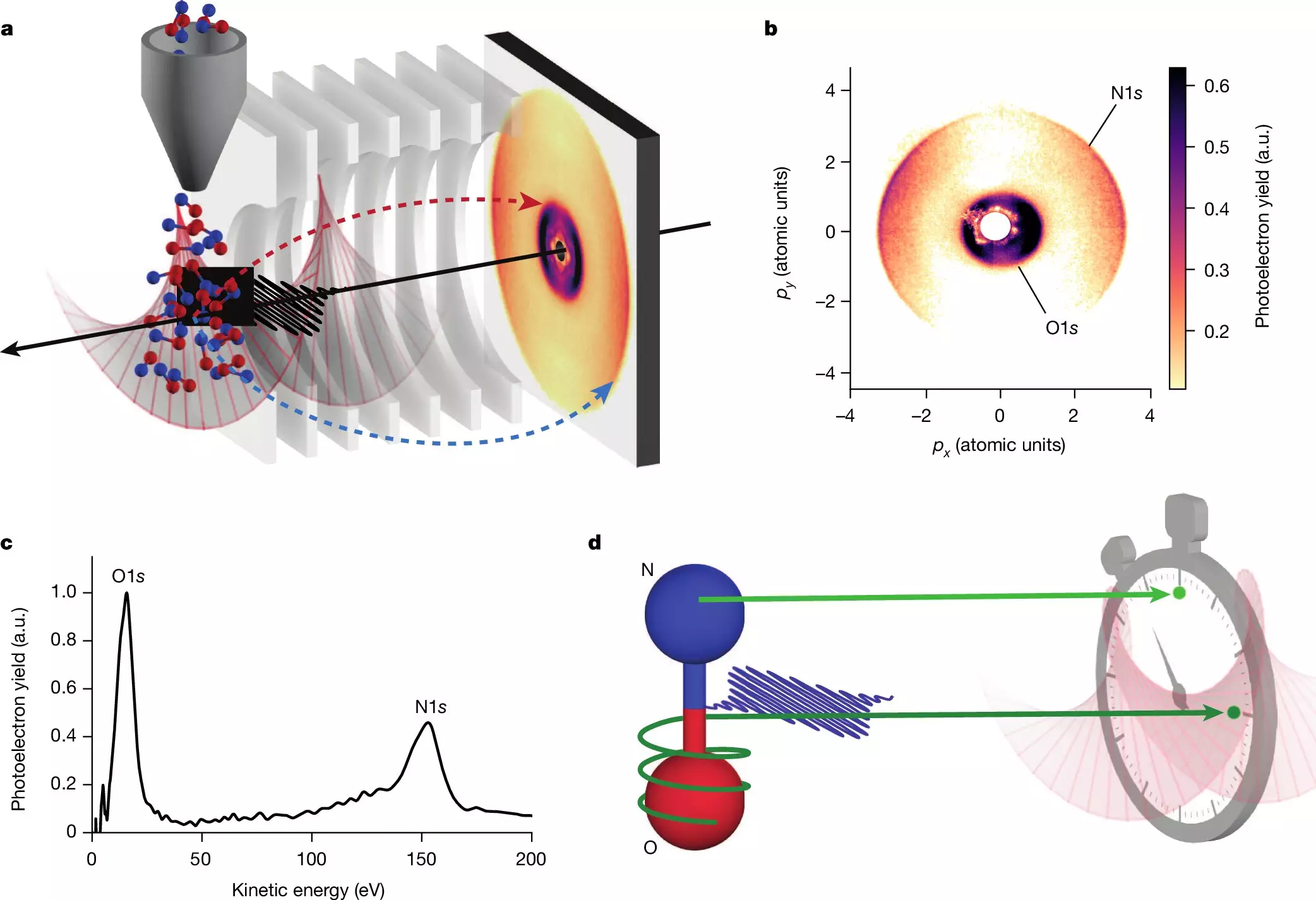In a groundbreaking study published in *Nature*, an international research team has made significant strides in understanding the intricate dynamics of electron behavior within molecules. By exploring attosecond delays—the minuscule time intervals corresponding to one quintillionth of a second—scientists have begun to uncover the complexities of electron activity when exposed to X-ray radiation. This research not only marks an important milestone in the field of attosecond physics but also paves the way for potential advancements in various scientific disciplines.
Harnessing the power of advanced technologies, specifically the Linac Coherent Light Source (LCLS) at Stanford’s SLAC National Accelerator Laboratory, researchers conducted experiments that revealed captivating insights into electron dynamics. By using high-intensity X-ray flashes generated by the LCLS, the team was able to measure unprecedented time delays linked to electron ejection and subsequent interactions with Auger-Meitner electrons. This revolutionary methodology allows scientists to essentially ‘photograph’ the inner workings of atoms during a chemical reaction, offering a tool to visualize molecular evolution in real-time.
The implications of this enhanced observability cannot be overstated. Attosecond physics has long been trapped in theoretical confines due to a scarcity of experimental tools capable of producing and visualizing these swift events. The recent advancements in laser technologies have opened a new frontier, moving from mere exploration to detailed observation of electron movement throughout various states of matter.
One of the most surprising findings during this study involved the length of time it took electrons to react under certain conditions. Researchers reported delays of up to 700 attoseconds, a duration that exceeds current theoretical predictions. As Alexandra Landsman, a co-author of the study, articulated, this complexity showcases that our understanding of atom-level interactions is far from complete. The nuances of how deeply bound electrons behave when displaced challenge previously held notions, compelling scientists to refine their theoretical frameworks for light-matter interactions.
These revelations present a double-edged sword—a more profound understanding of electron dynamics is necessary for developing better models, yet they also shed light on previously elusive aspects of atomic interaction. As researchers strive to decode these processes, they may encounter new behaviors that could revolutionize our knowledge in fields ranging from quantum physics to materials science.
Implications for Future Research and Applications
The broader implications of this groundbreaking work extend well beyond mere academic curiosity. As scientists gain deeper insights into electron behavior, opportunities for practical applications begin to emerge. For example, the understanding of intra-particle dynamics, as hinted at by these findings, could have transformative impacts on medical technologies. Attosecond science might eventually contribute to the early detection of cancers, enabling the identification of malignant tumors or blood cancers through the exploration of molecular markers.
Further research could lead to advanced methodologies in other realms as well, including energy storage, where knowledge about electron transport can optimize quantum systems and enhance the efficiency of solar cells or batteries. The doors to discovery are wide open as the study of attosecond physics integrates itself into various domains of science and engineering.
Looking Ahead: The Future of Attosecond Science
As Lou DiMauro, a co-author and prominent physicist, observes, the future looks promising for the field of attosecond science. Continued exploration and understanding of these ultrafast phenomena will likely yield profound insights across multiple scientific fields. The quest to uncover the intricacies of matter at the smallest scales not only serves to fulfill our innate curiosity about the universe but might also lead to practical innovations that could benefit humanity in ways we have yet to imagine. The journey ahead is laden with potential, as we stand on the precipice of a new era in understanding the fundamental forces that govern our physical world.


Leave a Reply